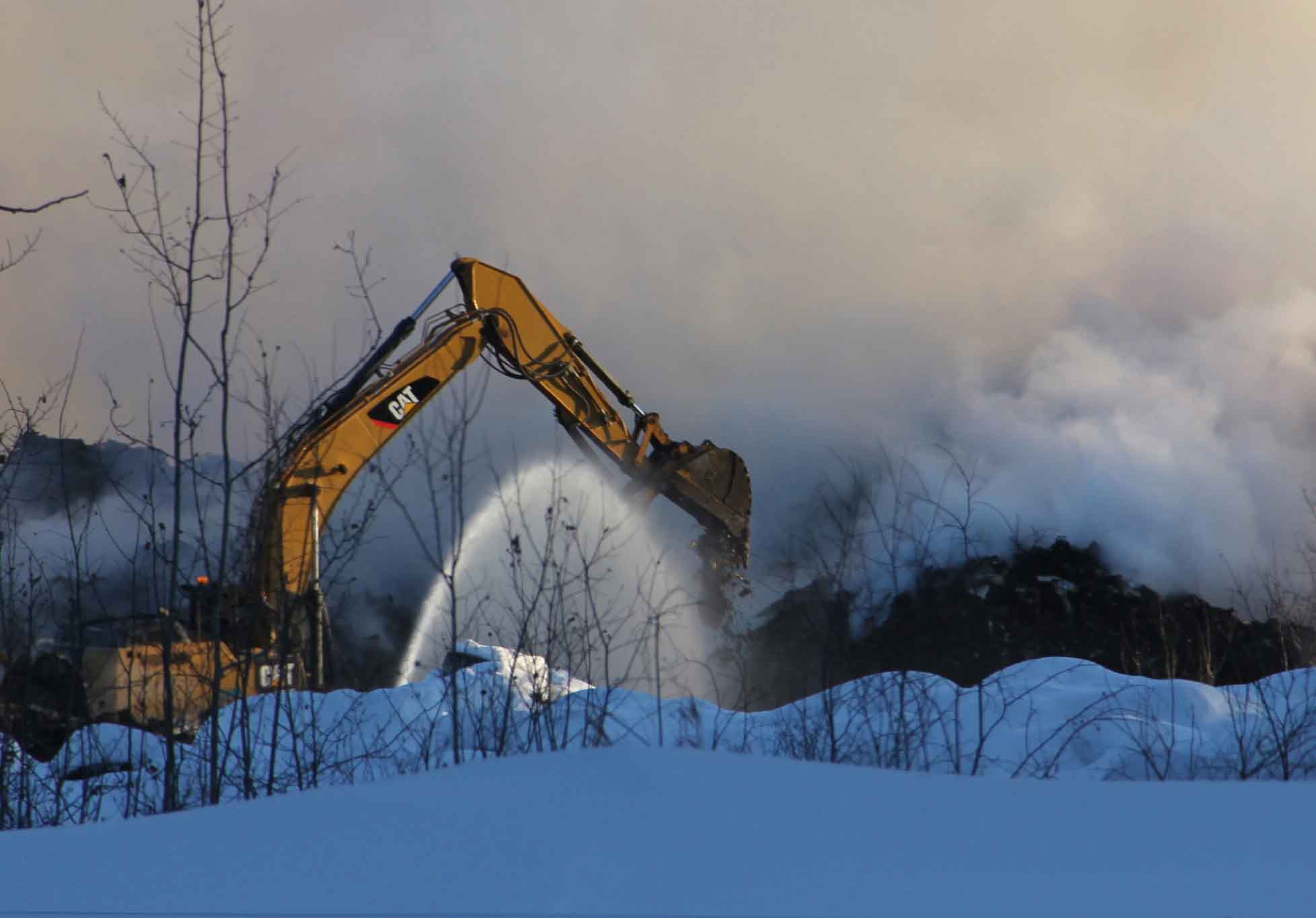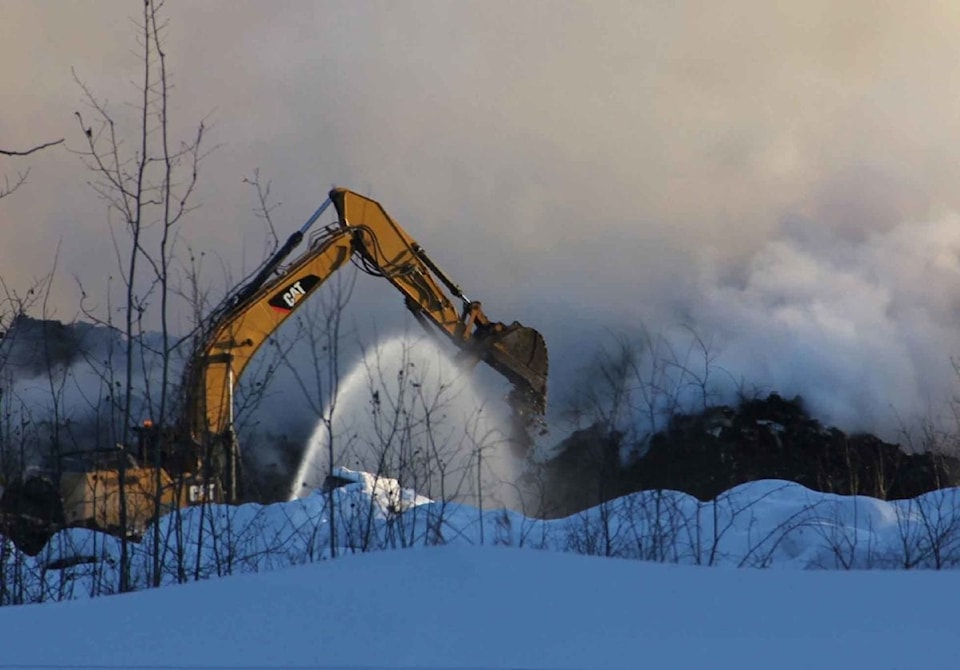
NNSL file photo
The cost of the now-extinguished fire at the landfill site continues to rise for the Town of Hay River.
At the April 8 meeting of council, Judy Goucher, the town's senior administrative officer, reported that the cost had climbed to over $600,000.
"As of April 4, that number is now $608,000 of which approximately $200,000 is tied to environmental," she told councillors. "So that's sampling and sample testing, which is very expensive, especially in an expedited manner and because of the spectrum of sampling that we were required to do."
Goucher said the remainder of the costs for the fire – which burned from March 3 to March 28 – is largely directly related to contractors.
There was "very little" in the amount of wages to firefighters, she noted, explaining they were paid their normal compensation of $25 per function, which became $25 per day during the landfill fire.
The total cost includes accommodations for firefighting crews from Fort Smith and Yellowknife.
At the end of active operations at the landfill, firefighters had spent 2,496 hours on the fire.
On April 8, council passed a motion calling on the GNWT to help cover the costs of the fire by applying its Disaster Assistance Policy.
Goucher updated the cost of the fire at the request of Coun. Jeff Groenewegen, who also asked if there are any ways to mitigate the costs of possible future fires at the landfill.
The SAO said that would be a discussion for a debrief on the fire and for consideration during future planning for a new landfill site.
"Because this was an old site, which complicated the situation in terms of the approach to the firefighting," she said. "There was a lot of unknown in terms of what was below the surface."
Ross Potter, the town's director of protective services, said getting a dumpsite that's properly segregated is going to be important.
According to background information provided to town council, environmental mitigation and monitoring procedures were put in place to prevent leachate getting into the river. The town developed a water monitoring plan and sampling program to measure the extent of any environmental impact from the fire or the water release from firefighting.
The town is working with the Department of Environment and Natural Resources and the Mackenzie Valley Land and Water Board to determine next steps for environmental clean-up of standing water created from the firefighting activities.
The plan's elements and estimated cost are yet to be determined.
The fire burned about three acres in the eastern corner of the dump, where there is predominantly household garbage and construction material.
